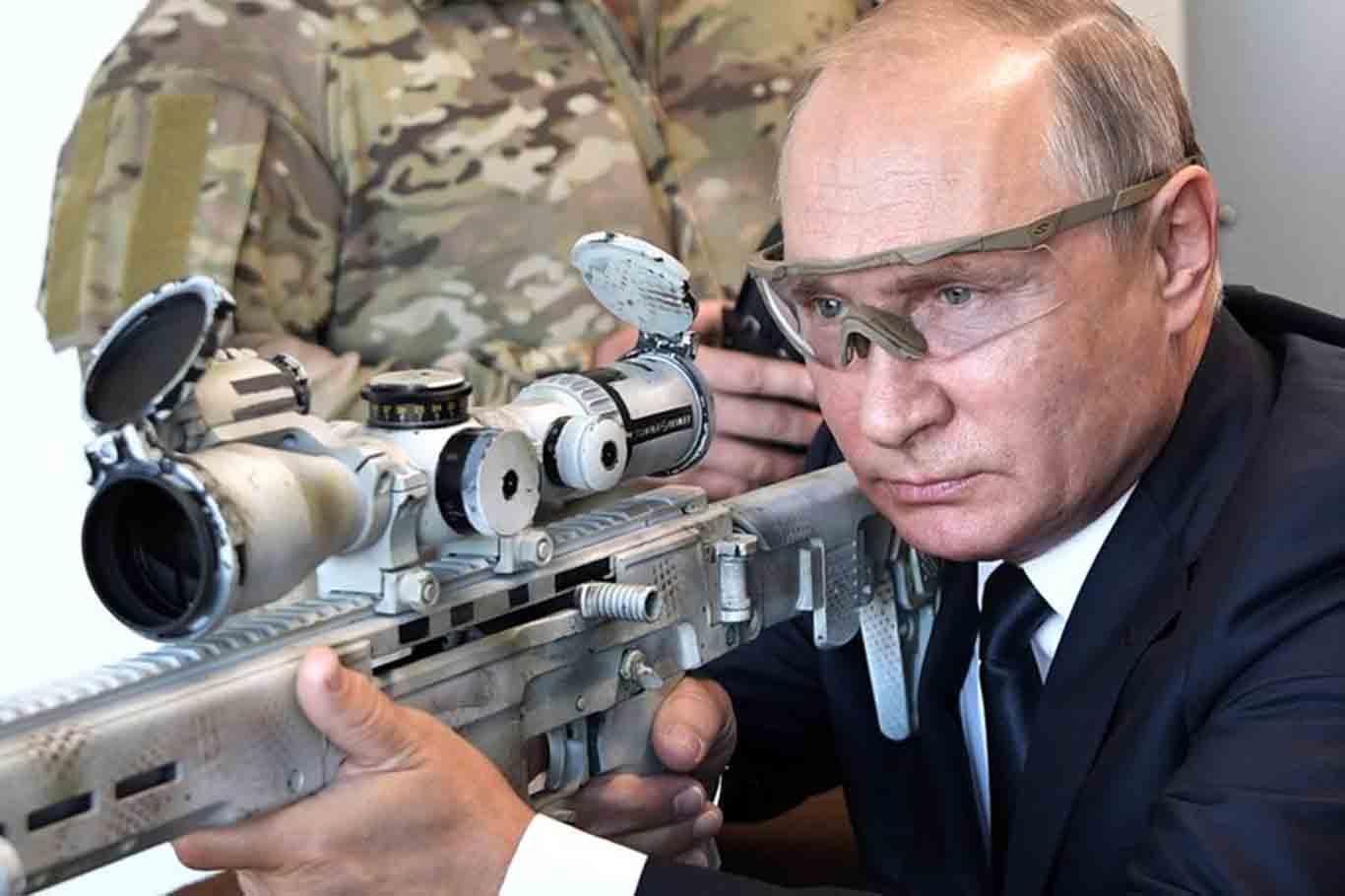QAMISHLI, Syria (North Press) – The American Al-Momitor website recently published a report on the Russian-Ukrainian war, in which it said “The Russian military campaign in Syria, which began in 2015, prepared Moscow on a military-technical level for the current confrontation between Russia and NATO, as well as the Russian-Ukrainian escalation.
Footages from Ukraine documented scenes of destruction, and indications of the use of cluster munitions, barrel bombs, and conventional missiles, the same that Russia was experiencing in Syria, according to a report by the Syrian Observatory for Human Rights (SOHR) on August 19, 2019.
On February 24, the Russian invasion of Ukraine began under the pretext of supporting the separatists, with a series of missile attacks on sites near the capital, Kyiv, from the north and northeast, and the Crimea, which it annexed in 2014.
Russia said it had no intention of controlling Ukraine, and that its military operation aimed only to disarm and de-Nazify Ukraine, a measure taken 30 years after the United States pressured Russia hard.
During the first hours of the attack, Russia used long-range artillery against the city of Kharkiv near the Russian border, in addition to the entry of ballistic missiles as part of the attack, and the sounds of planes were heard over the central city of Zaporizhzhia, according to the Ukrainian Interior Ministry.
The use of these Russian weapons comes after Russia has tested its weapons in Syria, since 2015.
On July 14, 2021, Russian Defense Minister Sergey Shoygu said that his country’s army had tested more than 320 different types of weapons in Syria, including helicopters, since 2015.
Testing the equipment in the mode of real combat operations made it possible to raise the quality of many units to a completely new level, according to Shoygu.
After the Russian intervention in Syria, statistics documented that Russia’s arms exports in that year were estimated at $14.5 billion, while before that they had not exceeded $10.3 billion.
Since the first day of the Russian invasion of Ukraine, tanks have been used, as Russia owns 12,420 tanks, and 30,122 armored vehicles, in addition to owning more than 17,000 artillery and rocket launchers.
Russia has 722 Attack aircraft and 544 Attack helicopters, most of which were used in the attack on Ukraine, in addition to possessing 6,225 nuclear warheads, 570 barges and warships, according to the Global Firepower (GFP) website.
Earlier, Shoygu stated that the proportion of modern weapons and equipment in Russia reaches 70%, which is the highest compared to the rest of the world’s armies, after field-testing most of them on Syrian territory.
The Russian Military Files website reported that Su-24M bombers flew in Syria alongside Su-25SM attack aircraft and Su-35S fighters.

The website stated that the S-300, S-400, Pantsir-S1 and Buk-2 systems provided protection from air attacks in Syria, the same weapons that were used in Ukraine to cover the airspace.
Russia has sent a modern all-weather attack helicopter Mi-28 Obi to test it in Syria, the plane was updated taking into account the combat experience in Syria, according to the Russian Sputnik Agency.
After the modern Russian T-90 tank was used in the Syrian war on the ground, Russia sold the version to India and Algeria, and after seeing its effects on the Syrians, Saudi Arabia expressed its willingness to buy it as well, according to local media agencies.
Putin also said that his country’s army has tested the latest weapons it possesses and proved their unique characteristics in the war in Syria.
He issued directives to develop direct weapons, including winged Kalbir missiles, in mid-2019.
Testing weapons in Syria helped to discover and correct the defects in them, which subsequently contributed to an increase in Russia’s arms sales and the development of its military power that we see today in Ukraine, according to the Russian Ministry of Defense.
In 2019, the ministry announced the suspension of production of 12 types of weapons, after proving their failure during field-testing them in military operations on Syrian territory.
Syrian President Bashar al-Assad announced the support of the Russian military campaign against Ukraine, at a time when the West is publicly opposing the latest Russian move.
Russia’s army ranks second in the annual Global Firepower index after America, followed by China.
The number of the Russian army is about 280,000, out of a total of about 900,000 armed forces, in addition to nearly two million reservists.
The writer Roger Boyz published an article in The Times newspaper entitled ” Putin’s lesson from Syria is that bombing works”, in which he said “Russia has a learning army. That is, it is quick (at least in this century) to learn from its battlefield mistakes, adapts tactics to new technology and devises ways of keeping its enemies guessing.”
There are 52 short-range ballistic missile (SRBM) launchers on Ukraine’s borders, and the list of their targets likely includes fuel depots and air defenses according to Boyz.

